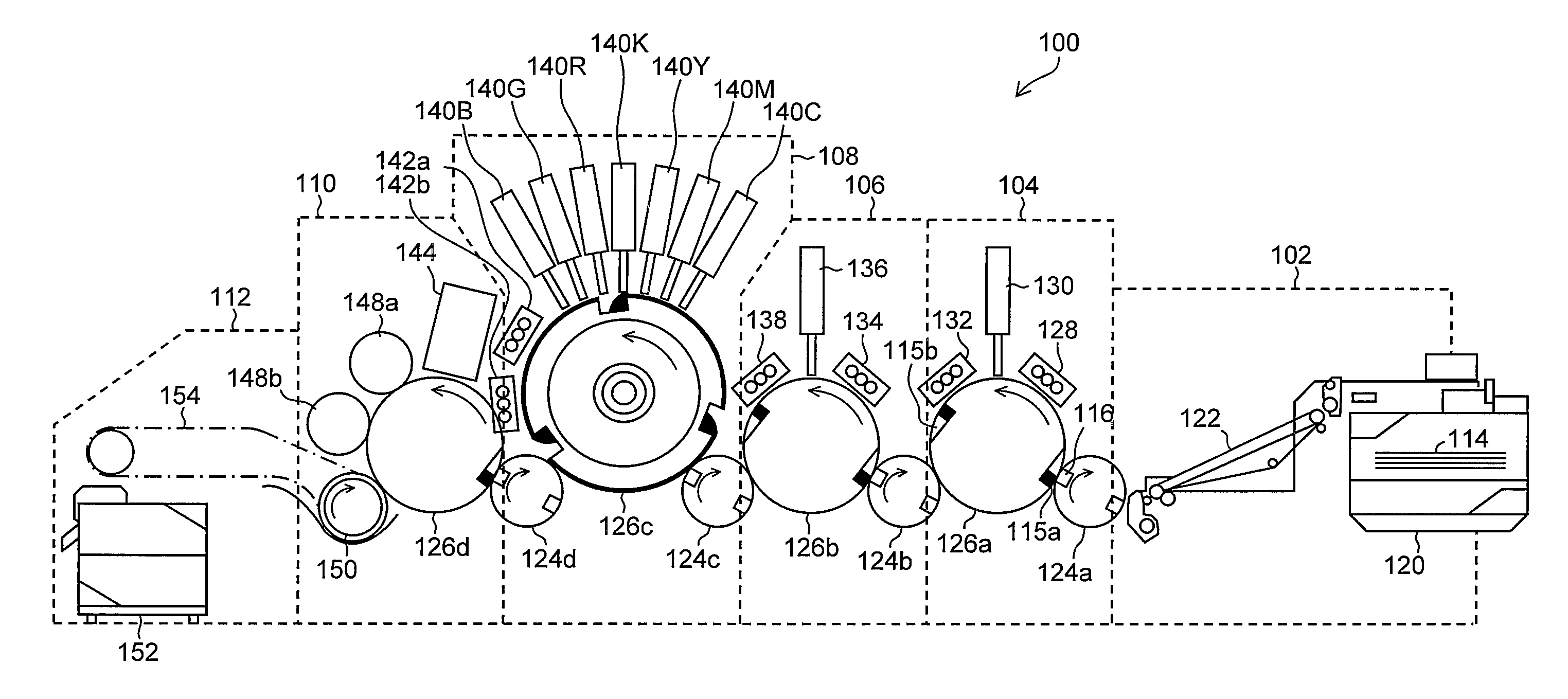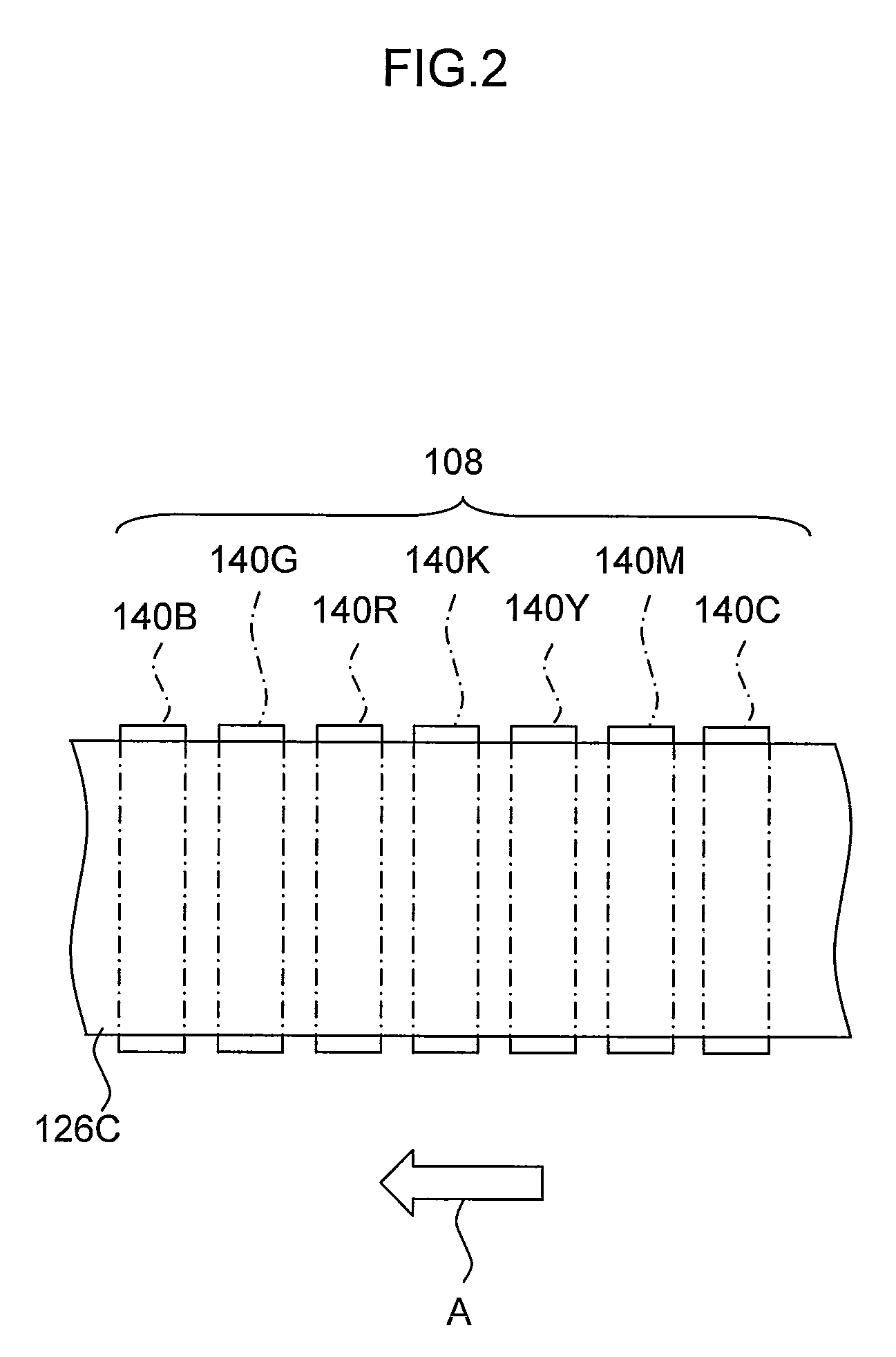Inkjet recording apparatus, test image forming method, and computer-readable medium
a technology of test image and recording apparatus, which is applied in the direction of printing, other printing apparatus, etc., can solve the problems of marked decline in recording image quality, marked decline in image quality, and concerns about the decline of determination efficiency, so as to improve the reliability of the reading of the test image
- Summary
- Abstract
- Description
- Claims
- Application Information
AI Technical Summary
Benefits of technology
Problems solved by technology
Method used
Image
Examples
first example
[0190]Firstly, it is confirmed that the same vertical line column 228 is not being read in by two inspection elements in the X direction. This can be done by checking for the presence of displacement in the X direction by progressively reading in the vertical lines 224 while forming the vertical line rows 226 at respectively shifted positions in the X direction.
[0191]Next, as illustrated in FIG. 12, the Y-direction length Ly of the vertical lines 224 is set to be equal to the inspection pitch in the Y direction PSY, and at least one vertical line row 226 (on region 230) and off regions 232 of the same number as the vertical line rows 226 are formed. FIG. 12 illustrates a mode where four on regions and four off regions are formed.
[0192]These are read in by the in-line sensor 144 (see FIG. 1), and the determination light intensity of the on regions 230 with respect to the determination light intensity of the off regions 232 (the determination light intensity ratio) is found. In other ...
second example
[0194]It is also possible to carry out the alignment described above by means of the method described below.
[0195]Droplets are ejected to create an all on pattern 240 at every other vertical column of the inspection pixels of the in-line sensor 144, this pattern 240 is determined by the in-line sensor 144, and the droplet ejection start point in the X direction is moved, one ejection dot at a time, in such a manner that the determination light intensity ratio between the on columns and off columns becomes a maximum value.
[0196]In other words, as illustrated in FIG. 13, an X-direction phase alignment test pattern 242 is formed by arranging, in two or more rows in the X direction, all on patterns 240 formed following the Y direction and each having an X-direction length of the same magnitude as the X-direction determination pitch PSX, an interval equal to the X-direction determination pitch PSX being left between the respective patterns 240.
[0197]The test pattern 242 is read in by the...
PUM
 Login to View More
Login to View More Abstract
Description
Claims
Application Information
 Login to View More
Login to View More - R&D
- Intellectual Property
- Life Sciences
- Materials
- Tech Scout
- Unparalleled Data Quality
- Higher Quality Content
- 60% Fewer Hallucinations
Browse by: Latest US Patents, China's latest patents, Technical Efficacy Thesaurus, Application Domain, Technology Topic, Popular Technical Reports.
© 2025 PatSnap. All rights reserved.Legal|Privacy policy|Modern Slavery Act Transparency Statement|Sitemap|About US| Contact US: help@patsnap.com



